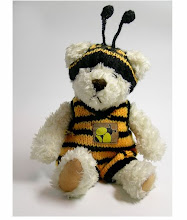 Movida
Movidaby Frank Camorra
This is written unapologetically for chefs. It starts with sofritos and sauces, giving you the starting components of a restaurant menu and dishes. The actual recipes are then simply a matter of putting these components together. So instead of learning individual recipes, you're learning Spanish cuisine from first principles. The chocolate ganache puddings were our favourite, most decadent desserts for a long time - baked pots of dark chocolate that melted slowly, richly, on the tongue and mingled languorously with blue chip vanilla ice cream. The paella is a great, communal feast of a dish. TK
 Paul Kirk's Championship Barbecue
Paul Kirk's Championship Barbecueby Paul Kirk
This book also teaches the basics and building blocks. It's more about how to cook well on the barbecue rather than recipes. Kirk explains why you need rub, what ingredients make up a rub, and how you can chop and change them. As in Movida, the recipes become examples of how you put components together rather than one-off individual dishes in their own right. You're working from the same rules that the barbecue chef is. These books teach a cuisine rather than a set of recipes. TK
 Ripailles
Ripaillesby Stephane Reynaud
Let's be straight up - I never cook anything from this book. But I love to dip into it, linger over the prose and pictures. It's a delightful beast of a cookbook, fat with recipes and whimsy. Ripailles, which translates as ''feasts'', is stocked with classic and regional French dishes laid out according to ingredient. In between Reynaud fills pages with quirky doodlings or photos that illustrate cooking styles or types of ingredients. He also writes about the people who are behind the food, featuring producers, farmers and chefs. Reynaud's tone is good natured and unassuming. It's impossible to find fault with a book that features "Olivier, the sexy baker'' . And name another food writer who provides sketches of the entire French rugby first 15, including Sebastian Chabal? Bee

0 comments:
Post a Comment